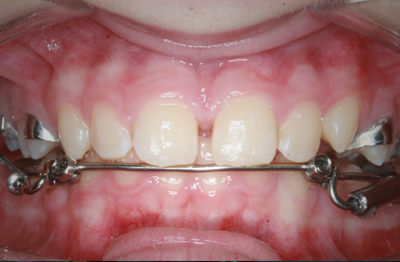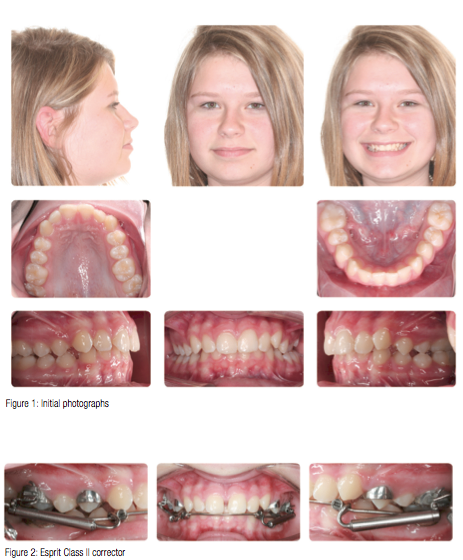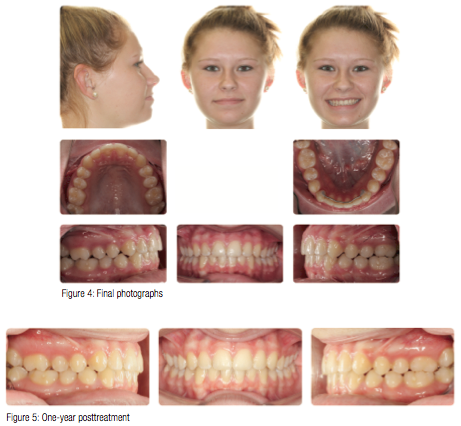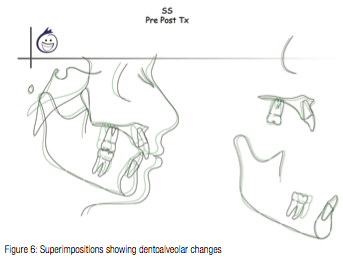
Dr. Robert Miller discusses a new Class II corrector
Over the past 4 years, Opal® Orthodontics has been developing a new universal Class II spring that has several unique properties that make it more durable and tolerable for the patient. Although many orthodontists use MARA and Herbst appliances, a majority use a Class II corrector that can be added to fixed edgewise appliances at any time.
[userloggedin]
Class II elastics are the most widely used because they are easiest on the patient, but elastics have limitations — mainly compliance.

Over the past 10 years, the Forsus™ device has gained in popularity because it is compliance-free and works quickly. Recently, an article was published studying the patient experience of the Forsus device.1 Although most patients tolerate the appliance (82%), 16% had a negative experience (bad to really bad). Roughly half of the patients had negative issues initially, but they overcame problems associated with cheek irritation after the first 4 weeks. These issues were also observed at about the same rate in our practice with Forsus appliances.
In this case report, we used a new Class II corrector on a patient who had a moderate Class II malocclusion characterized by a slight right/moderate left Class II dental discrepancy. Her condition was compounded by a left posterior crossbite (Figure 1). One of the advantages of using the Xbow™ device, developed by Dr. Duncan Higgins, is it allows for simultaneous compensatory crossbite correction while one corrects the antero-postero discrepancy.2 By using this approach instead of adding the springs to the arch wire, we reduce overall treatment time by 6 months with 10 months less time in fixed, edgewise appliances.3 Also, no significant incisor proclination changes were found when comparing the 2 methods (Xbow versus springs connected to the arch wire). Therefore, using negative torque (-6 degrees) does not prevent final proclination of lower incisors as many believe, so one must properly select cases with minimal incisor crowding.

The Esprit spring has better patient acceptance and tolerance because the spring is nested or internal (Figure 2). Upon insertion, patients respond more favorably to Esprit than to springs used in the past, such as Forsus, because they cannot feel the spring.
This patient, Savanah S., used the Xbow with the Esprit spring for 4.5 months (Figure 2), and we see typical overcorrection for planned rebound (Figure 3). In Figure 4, we see her final records after 4.5 months of Esprit springs and 16 months of fixed edgewise appliances. (She had a 2-month break between the Xbow and the fixed edgewise appliances.)
 Figure 6 shows the cephalometric tracings, which demonstrate little if any change from growth as expected due to her age at treatment onset (age 13.5), but favorable dentoalveolar changes.
Figure 6 shows the cephalometric tracings, which demonstrate little if any change from growth as expected due to her age at treatment onset (age 13.5), but favorable dentoalveolar changes.
At her 1-year posttreatment visit, photos show additional settling and improvement in her occlusion (Figure 5). The most notable part of her treatment was less cheek irritation from the Esprit spring. Most patients experience little, if any, cheek irritation because they cannot feel the spring. The push rod and clip connector are easier on both the patient and the clinician.
In summary, the Xbow device provides a great alternative to Herbst and MARA devices in moderate Class II discrepancies because it is more tolerable for patients and requires no stainless steel crowns. The Esprit spring is a better alternative to Forsus as the engine that powers either Xbow or connection to the arch wire because it is more durable and comfortable for the patient.

References
- Bowman AC, Saltaji H, Flores-Mir C, Preston B, Tabbaa S. Patient experiences with the Forsus Fatigue Resistant Device. Angle Orthod. 2013;83(3):437-446.
- Xbow. Homepage. www.crossboworthodontic.com. Accessed April 28, 2014.
- Miller RA, Tieu L, Flores-Mir C. Incisor inclination changes produced by two compliance-free Class II correction protocols for the treatment of mild to moderate Class II malocclusions. Angle Orthod. 2013;83(3):431-436.
Stay Relevant With Orthodontic Practice US
Join our email list for CE courses and webinars, articles and mores


